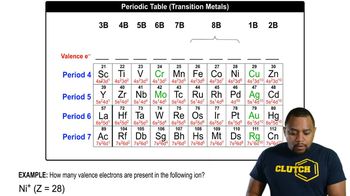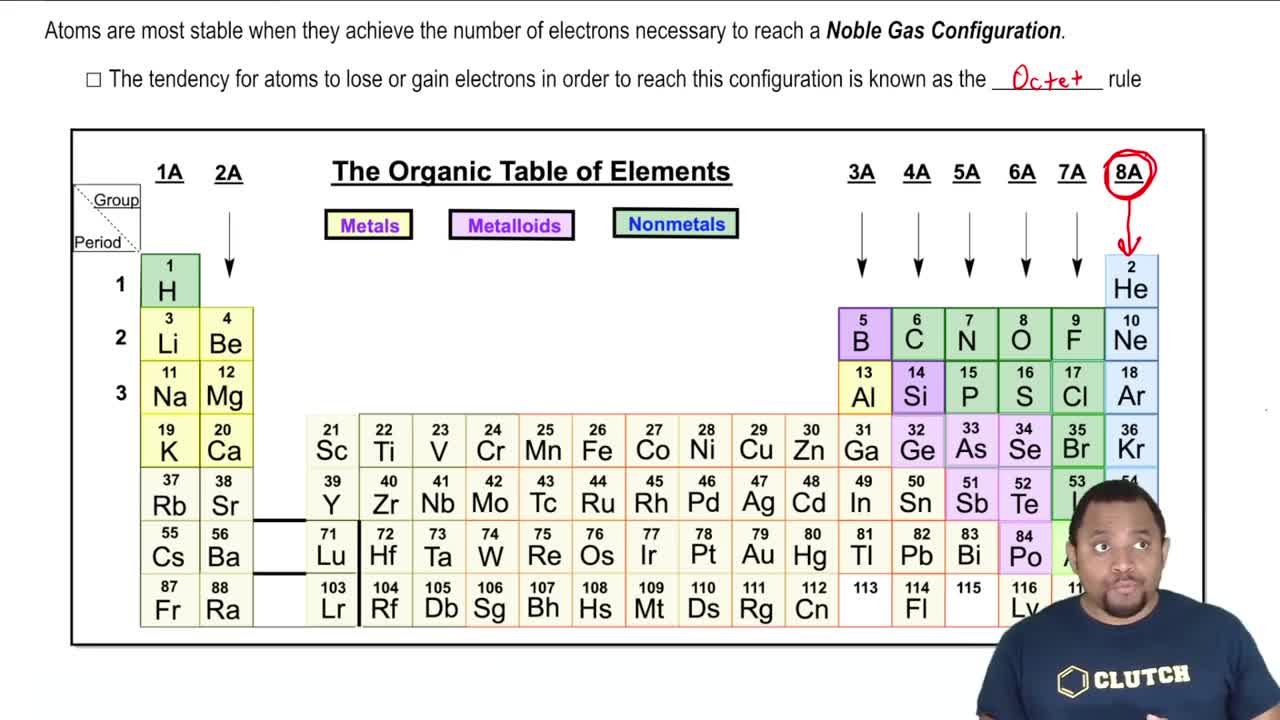Textbook Question
Modify the following line-angle drawings to show all lone pairs.
(b)
 Verified step by step guidance
Verified step by step guidance Verified video answer for a similar problem:
Verified video answer for a similar problem:



 2:14m
2:14mMaster What is a valence electron? with a bite sized video explanation from Johnny
Start learning